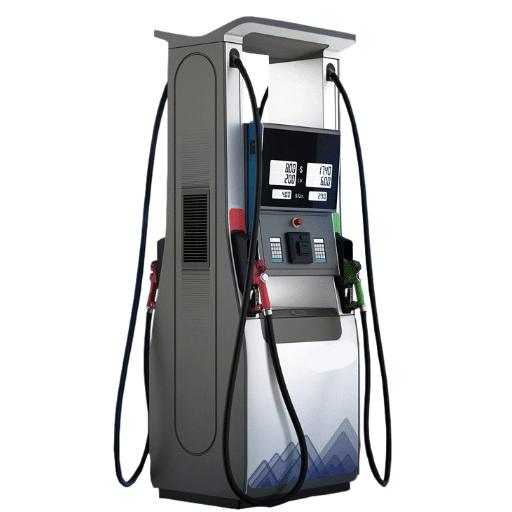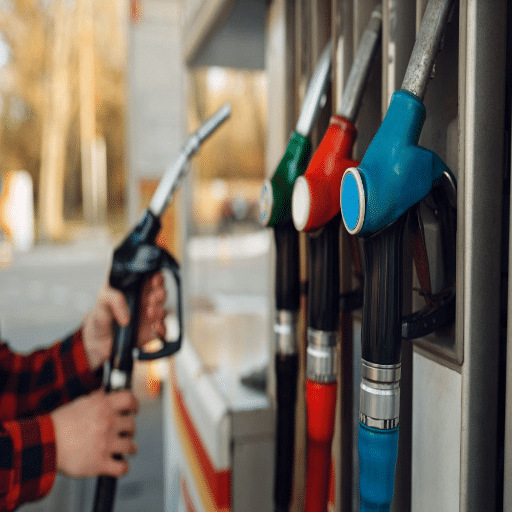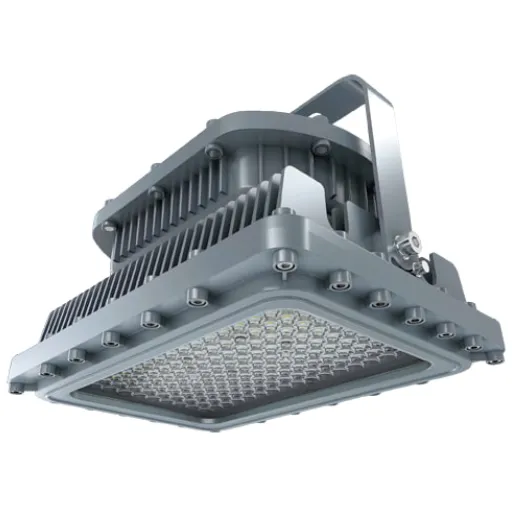Considering the building of a gas station, everything is essential if any particular factor is considered. Apart from protection and aesthetics, the canopy adds to the construction’s durability, efficiency, and utility. The two more commonly used materials are steel and aluminium, each casting different shadows of benefits and peculiarities on canopied spaces. Which one suits your gas station best? The review will discuss the positives and negatives of steel and aluminum canopies so you can make a fair choice. From strength, price, and upkeep down to ecological footprint: we’ve got those main factors cut and dry for you so you can decide which works for your purpose.
Introduction to Gas Station Canopies
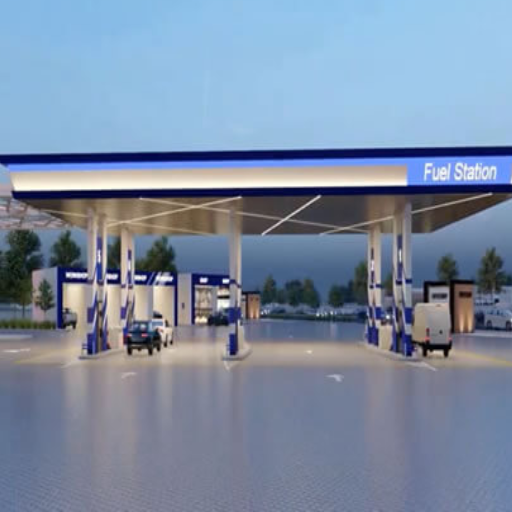
Gas station canopies are essentially design elements in architecture intended to shelter, protect, and provide visibility for a fueling station. These canopies are constructed from sturdy materials like steel or aluminum to shelter the customers and equipment from adverse weather like rain or snow and keep direct sunlight away. The canopies serve as a medium for branding and signage, allowing a driver to identify the station easily. A well-designed canopy improves the functionality of the gas station as well as its appearance and the ambience experienced by the customers.
Definition and Importance of Canopies
Canopies are key structural elements in any fuel station, providing shelter and enhancing usability. They are most frequently constructed of strong materials such as steel or aluminum to withstand extreme weather conditions like heavy rain, snow, or intense heat. Industry observations claim canopies add to safety through adequate lighting, thereby lessening accident rates in evenings or low visibility situations. Research has found that customer satisfaction is raised when canopies are well-lit and aesthetically pleasing, to the extent that they decide a customer’s repeat visit.
Besides providing protection, canopies have a marketing function since they offer prominent display locations for logos, branding, or advertising signage. Data shows that stations with highly visible and branded canopies tend to fare better in attracting the occasional motorist. With the rise in environmental consciousness, some contemporary canopies are fitted with solar panels, enabling a fuel station to generate sun-powered energy and curb its carbon footprint. The study presents canopies as one of the crucial ingredients in a perfect recipe that blends functionality, safety, aesthetics, and sustainability in the gas station design.
Overview of Gas Station Structures
Modern gas stations are complex structures. They are built for functionality, customer convenience, and sustainability. The average U.S. gas station ranges from 0.5 to 1 acre in lot size, often depending on its location and intended customer base. The structure would generally include functional zones such as the islands for fuel, a convenience store, restrooms, and perhaps additional services such as an automatic car wash or an EV charging station.
The advent of electric vehicles has driven stations to expand their infrastructure, with many now incorporating fast EV chargers that deliver an 80% charge in 30 minutes or less, keeping with growing consumer demand for greener travel solutions.
Convenience stores increasingly serve as primary income sources, as almost 60% of gas station profits now come from non-fuel transactions. As a response, stores are equipped with larger food programs and increased offerings in beverages and household essentials that satisfy consumer needs. On the other hand, from a sustainable angle, various modern gas stations even incorporate green technology such as LED lighting, stormwater management, and green roofs at some urban sites. Such an advanced approach allows for increased greenness of these stations and reduced operational costs.
Gas stations’ evolving designs adjust according to technological advancements and shifting consumer needs, culminating in a very active transportation infrastructure.
Role of Canopies in Customer Service
Canopies at gas stations do not offer mere shelter; they are integral to customer satisfaction. They keep customers refueling their vehicles dry from rain or snow and, at other times, from blistering heat. These canopies come equipped with top-notch lighting systems that enhance the visibility and safety of customers at night.
Modern canopy design now emphasizes energy efficiency and sustainability. Many canopy designs include solar panels so the station can generate renewable energy, drastically reducing its carbon footprint. Studies conclude that implementing sustainable technologies in canopy design can reduce 30% energy consumption, also resulting in savings in property value for the station operators in the long term.
Additionally, they also have strong connotations of branding and perception. If respectfully designed with consideration for signage, logos, and a visually pleasing atmosphere, a gas station can go a long way in creating a good first impression in the minds of potential customers. Market research has shown that stations with modern, clean, and well-lit canopies can attract 15 to 20% more traffic than those without, so their contribution lies in the satisfaction of the customer, but also the viability of the business.
Materials Used in Canopy Construction
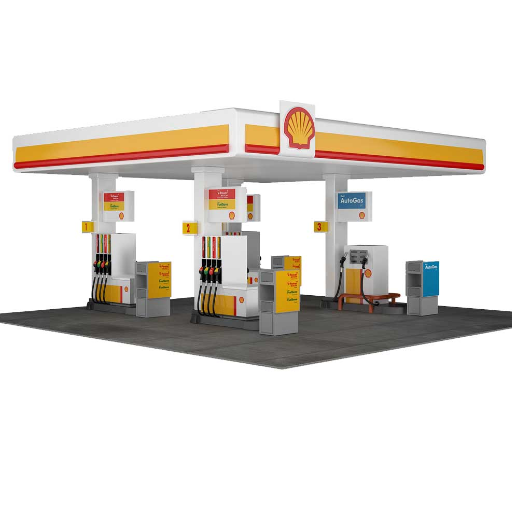
Steel: Steel is chosen for its strength and durability as the canopy’s structural framework against the wrath of weather forces.
Aluminum: Lightweight and corrosion-resistant, aluminum is the choice of canopy panels and support systems due to its easy cleaning and classy look.
Polycarbonate Panels: Their premium weather-resistant, UV-resistant, and light-transmitting properties make them a good choice for a classy yet functional design.
Composite Materials: This combination offers design freedom and increased durability regarding the canopy’s look and capacity.
Glass is used in premium design to provide an elegant and contemporary design language while allowing structural integrity to be realized upon properly engineered systems.
Characteristics of Steel Structures
Steel structures are esteemed for their strength, durability, and flexibility. Among many attributes, they have an excellent strength-to-weight ratio, carrying heavy loads without adding much bulk or weight. Steel is free from warping, shrinking, or cracking and dependable for the smallest to the most significant structures.
In addition, steel constructions are versatile and prefabricated, reducing construction time and cost. While steel allows architects to express their creativity through complex designs, it upholds structural integrity. Environmentally, uncontaminated steel is 100% recyclable, and when appropriately engineered, it withstands harsh conditions such as high winds, earthquakes, and extreme temperatures.
Steel allows extremely low maintenance, as steel structures, when treated, resist the effects of corrosion and other degradation forms. Steel can serve various structural functions with these characteristics, from bridges and skyscrapers to residential and industrial buildings.
Advantages of Aluminum Canopies
Aluminum canopies provide several benefits that make them a worthy consideration for residential and commercial environments. Owing to its extremely lightweight nature, aluminum is convenient to handle, transport, and install—an advantage over other heavier materials, such as steel. Moreover, this lightweight metal does not compromise much in strength and durability, ensuring long life and wear and tear.
Another essential feature for aluminum canopies is corrosion resistance. Rust is a menace; it destroys metals by rusting. Aluminum resists rust because of the formation of a fragile oxide film. Hence, aluminum canopies are widely used outdoors, especially along coastal areas where moisture and salt-laden breezes would otherwise speed up degradation.
The versatility of aluminum canopies allows for significant customization, more in design and unconventional structures, accommodating various architectural styles and functional needs. In addition, the aluminum canopy will prove its high energy performance by reflecting sunlight and reducing and controlling the temperature underneath the canopy.
Several factual points may depict the benefits of aluminum. Aluminum is 100% recyclable, giving it added environmental consideration. Aluminum recycling demands only 5% of the energy needed for primary production, significantly reducing its carbon footprint. This nature-friendly trait, combined with its low maintenance requirements, makes aluminum canopies a good, sustainable, and economical choice for any modern construction project.
Comparison of Steel and Aluminum
Steel and aluminum, when put in comparison, find their definition in very different characteristics and idiosyncratic formations. Steel has traditionally been regarded as the most robust building material, from which heavy-duty structures are made, needing great load-bearing capacities. This hardness limits the dents and other damages, making it ideal for high-stress environments. However, it is rather heavy, which sometimes restricts its use in lighter or portable designs and creates higher transportation or handling costs.
On the other hand, lighter aluminum will suffice for many applications regarding strength. Aluminum stands well as a corrosion barrier when subjected to natural elements and is probably the best alternative for manufacturing outdoor equipment. Being malleable, aluminum provides the opportunity for flexibility in design. Aluminum is also green since it is 100% recyclable, thus enhancing its profile for green projects. Yet, aluminum may not be as strong as steel under very demanding loads and probably will be reinforced to cope with some heavy-duty applications.
Choosing between steel and aluminum depends on the project’s requirements relative to strength, weight, environmental exposure, cost, and sustainability. Steel has its strengths and durability, but aluminum is light, corrosion-resistant, and recyclable, making it an attractive choice for any green construction today.
Types of Steel for Canopy Construction
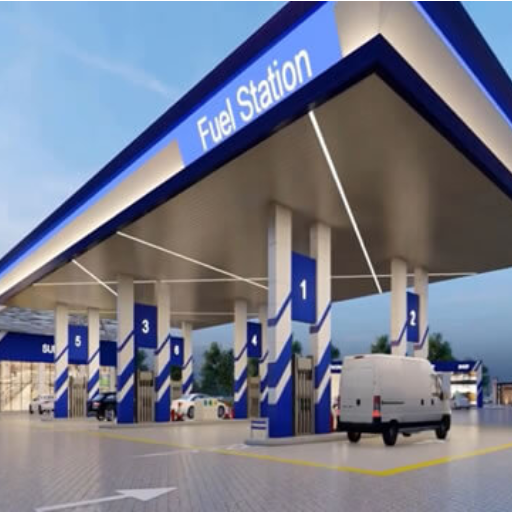
Carbon steel, stainless steel, and galvanized steel are the main types of steel to consider for canopy construction.
Carbon Steel—Being strong and cheap, it is the most commonly used steel in structural applications. It is the perfect steel for applications that require wearing under enormous loads, but it may need a protective coating against rust in outdoor environments.
Stainless Steel—Stainless steel has better corrosion-resisting properties and a slim, modern look. It is perfect for canopies that are often exposed to humidity and moisture in a coastal area for long-term durability.
Galvanized Steel—Due to its zinc coating, Galvanized steel offers the best corrosion resistance and is less expensive than stainless steel. So, it will surely be a better choice for a canopy outdoors on a borderline budget.
Choosing the right steel type will ensure performance and longevity when you understand the particular demands of your project regarding environmental exposure and aesthetic preferences.
Common Types of Steel Used
I, for one, regard stainless steel as the correct type of steel given its durability, resistance to environmental agents, and economic viability. Stainless steel takes my first rank for its anti-corrosion properties and neat appearance, all features carved out for long-lasting performance. Galvanized steel, standard with a zinc coating, never fails any project under a tight budget. Widening and weighing options in light of this will enable me to choose the most suitable steel for the job confidently.
Benefits of Using Prefab Steel Structures
Life fast. Don’t waste time on construction: these are a few of the advantages that prefabricated steel structures enjoy. Another key advantage is time savings regarding construction. Machines can be prefabricated in controlled environments, assisted by different vendors, and steel structures are put up within one to two days at the site, versus one and a half months for traditional construction. It means savings in time and labor costs.
Durability is another issue: steel is sturdy, long-lasting, insect-free, rot-free, and fire-resistant. Modern galvanized or stainless steels will further assign levels of resistance to rust and corrosion and can thus be installed across multiple environments, from coastal to industrial, harsh situations. Studies have shown that a steel building can last for upwards of 50 years if it’s maintained well.
From an environmental perspective, prefab steel is the more sustainable option. Steel is highly recyclable; 80% or more of the material can be reprocessed without losing quality. The precise manufacturing process also contributes to the green construction philosophy by cutting down the construction waste; it is said that prefab processes can reduce construction material waste by up to 30%.
Thus, cost-effectiveness also helped fill in the second slot. Steel structures are better for businesses and privatized laboratories that choose prefabs due to their incredibly short construction time, minimum waste, and minimal stringent labor. At the same time, they demand the least upkeep cost, offering the best value.
More improvements in the design indicate that prefab is flexible and adaptable. These constructions can be easily expanded or modified to fit potential residual needs, stitching accordingly for residential and commercial use. For the construction of warehouses, office buildings, or even homes, prefab steel provides a versatile answer that offers speed, strength, and sustainability.
Cost Implications of Different Steel Types
When weighing the cost implications of different types of steel, the initial investment should be weighed against the longer-term value. Steel types usually incorporated in the construction industry are carbon steel, alloy steel, stainless steel, and tool steel, all priced differently depending on their properties and usages.
Carbon Steel is widely used because it is the cheapest type, especially for structural applications such as beams and frames; price-wise, it varies approximately from $500 to $800 per ton, depending on the grade and the region. However, its cheapness entails that this steel may need some treatment or coating to render corrosion resistance, so that maintenance costs might increase over time.
Alloy Steel, which increases elements such as chromium, nickel, and molybdenum for better strength, is slightly more expensive than carbon steel, usually from $800 to $1,200 per ton. The added expense is justified in applications that need better mechanical properties, such as pipelines or heavy machinery components.
Stainless steel, known for its superior corrosion resistance, has a higher price tag. The prices generally fluctuate between $1,500 and $3,000 per ton, depending on the grade and alloy composition. Despite the high initial investment, however, stainless steel saves handsomely in the long run with low maintenance costs and an extended service life, mainly in corrosive environments exposed to moisture or chemicals.
Tool Steel, made to cut, drill, or shape things, is one of the most expensive types, ranging from $2,000 to $4,000 a ton. Its high price is due to its superior hardness and wear resistance, which are needed in industrial tools and molds.
However, measuring these price variations against the project’s particular requirements about strength, life, and environmental exposures is vital. Also, the prices may tend to differ due to changes in raw material prices or regional market conditions; hence, it becomes vital to gauge the current market data while making procurement decisions.
Roofing Systems for Gas Station Canopies
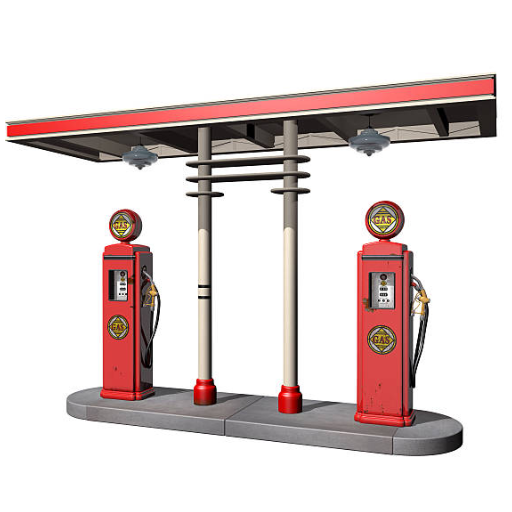
An ideal roofing system suitable for gas station canopies must withstand time and weather robustly and require very little maintenance. Metal roofing is ideally preferred because of the life it can serve and its ability to withstand inclement weather. Aluminum or galvanized steel roofing fits in well here. Alternatively, single-ply membranes such as TPO (Thermoplastic Polyolefin) may be preferred- they are lightweight, efficient in energy, and excellent in UV protection. Remember to consider all factors, such as the specific area’s climate, the budgeted price range, and the look of the place, to choose a system that will provide the best results and cost-effectiveness.
Design Considerations for Canopy Roofs
Several factors must be considered when designing canopy roofs so that the functionality, durability, and aesthetics are acknowledged. The choice of materials is the most important one because it determines the longevity and performance of the structure. Take polycarbonate sheets, for example. They are increasingly popular owing to their high impact resistance and excellent light transmissive properties: they allow around 90% of natural light while blocking harmful UV rays. Conversely, tensile fabrics such as PVC-coated polyester or PTFE are flexible and resilient materials offering vast commercial and residential design options.
Another consideration is sufficient load-bearing capacity and resistance to wind. Canopy roofs should be designed to endure the weather conditions paralleled with snow loads and wind speeds. Studies indicate that structures resisting wind speeds of at least 90 mph would suffice for most regions, though only extremes warrant greater figures. Well-planned drainage systems should be considered next; otherwise, water disposal will result in pooling and subsequent damage. Sloped roof designs with gutters will maximize water outflow and keep the structure from wear and tear in the long run.
Energy efficiency is another big concern in canopy design. Materials with reflective or cool roof coatings can reduce heat absorption by up to 15%, lowering cooling costs. When energy savings are considered, they should be well combined with proper insulation. Sustainability is gaining traction as more designers try to use recyclable or environmentally friendly materials to lessen their environmental impact. Thoughtful consideration of all these aspects can lead to the design of efficient canopy roofs that satisfy practical and ecological requirements.
Durability of Steel vs. Aluminum Roofs
When comparing steel and aluminum roofs, strength and durability are always considered when deciding the most appropriate material for any project.
Steel roofs are robust and can withstand high-impact processes, making them suitable for harsh weather conditions with heavy snow or hailstorms. They usually undergo coatings with either galvanized or galvalume finishes to increase corrosion resistance and longevity of up to 50 years or above with good maintenance.
Aluminum, in contrast, possesses a natural resistance against corrosion and rust. This property makes aluminum roofs exceptionally suited for coastal or humid areas where salty air speeds up the corrosion of other materials. Aluminum is lighter than steel, but it is very durable and has more than 40 years of lifespan. However, its softness increases the possibility of dents from heavy impacts.
In construction, other than being honest in upkeep, though, cheapness goes with steel-based material. Coatings or regular upkeep are sometimes needed for steel to resist corrosion. Aluminum, although being a bit expensive upfront, requires less maintenance and performs very well in corrosion-prone environments.
Ultimately, the choice could lie between steel and aluminum roofing materials, depending on environmental requirements, cost parameters, and the longevity desired for the roof system. Both materials have some distinct advantages; thus, a good decision must be made to fit a particular project requirement.
Lighting Solutions for Canopy Roofs
The lighting aspects for canopy roofs are bifocal, as in the technical scope and aesthetics, which include visibility requirements, safety, etc. Earlier, from the time of traditional systems, some energy conservation techniques might have been used for canopies. With the advent of LED systems, suggestions for energy conservation and longevity pertaining to canopy lighting systems began filtering in.
Canopy LEDs are preferred because of their greater energy efficiency and life span, generally over 50,000 hours. Compared to traditional sources, LEDs save about 75% of the electricity, which inherently promotes itself as a green and cost-effective solution for lighting. LEDs render superior brightness and uniform illumination with higher lumens per watt. Many LED lights also have the dimming option to adjust light levels according to the needs of the space involved, such as a parking lot, a gas station, or a backyard.
The dreaded word “motion-activated” is often attached to canopy lights in outdoor or commercial spaces. These lights save energy efficiently by lighting only when needed. They are also built waterproof, weatherproof, and resistant to external conditions.
Consolidating innovative lighting control systems powered by IoT (Internet of Things) technologies takes enhancement to the next level for canopy lighting solutions. The system would enable remote control to schedule and monitor light performance in real time through connected devices, maximizing lighting performance with minimal maintenance.
The lighting you install for a canopy roof varies with the canopy’s height, the brightness’s importance, and the environment surrounding it. A canopy lighting solution with advanced technology and a tailor-made design can address many practical and aesthetic needs.
Conclusion: Choosing the Right Canopy for Your Petrol Station
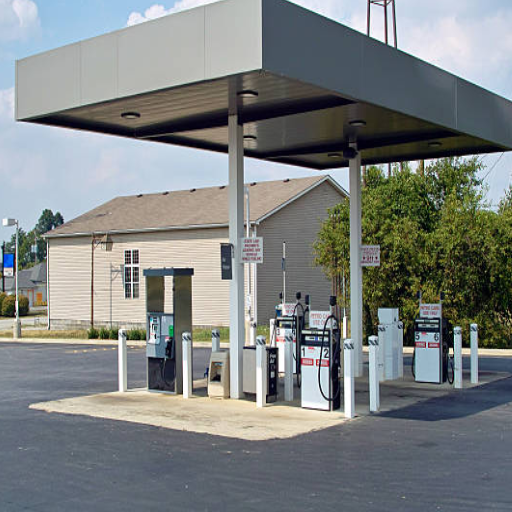
The appropriate canopy for your petrol station is fundamental for effective working conditions, safety, and customer satisfaction. Use sturdy materials that stand the test of time against weather conditions, as perceived from the canopy design that flows with the station’s layout. Prioritize lighting that increases visibility while conserving energy. Ensure that your canopy provider enjoys a good reputation for quality and trustworthiness, guaranteeing long-term performance and assistance during all later phases.
Factors to Consider When Selecting Material
Durability and Weather Resistance: The materials chosen must withstand harsh weather conditions, heavy rainfall, wind, and UV exposure. Steel and aluminum are preferred options for long-lasting structural integrity and minimal upkeep.
Cost-effectiveness: Determine the purchase price of a material and its usefulness. Inexpensive materials may, however, become more expensive due to durability and maintenance costs compared to higher-quality materials.
Environmental Impact: To reduce your petrol station’s carbon footprint, choose environmentally friendly or recyclable materials. Sustainable choices may also align with corporate social responsibility goals.
Aesthetic Appeal: The materials should complement the station’s overall design, enhancing its visual appeal while remaining functional.
Safety Standards: Materials must comply with industry-specific standards and regulations, providing safety and security to customers and staff.
Consider these factors and choose suitable materials for your petrol station establishment that promote functionality, cost savings, and aesthetic value.
Long-term Benefits of Each Option
When considering the long-term benefits of each option, one must first consider durability, cost-effectiveness, and environmental impact. Selecting superior-quality, durable materials will lessen the need for frequent replacements and save money and time over the years. Energy-efficient and eco-friendly options further minimize ongoing operational costs and, at the same time, stand tall under the banner of sustainability. Concerning all the foregoing considerations, I am confident that the materials chosen will stay valuable and contribute to the eventual success of the station.
Final Recommendations for Gas Station Owners
Choose Location and Accessibility: A location with high traffic and good accessibility guarantees a flow of customers. The proximity to highways, shopping centers, and residential complexes makes the place easier for a driver to locate.
Invest in Modern Technology: According to customer preferences, consider energy-efficient pumps, automated payment systems, or EV charging stations. Modern technology sustains operational efficiency and attracts customers with a contemporary feel.
Customer Experience: Should always prioritize a clean, well-lit, and safe environment, while providing other amenities such as clean restrooms, air pumps, and convenience stores that offer necessities and popular items, making it a place people love to visit more than once.
Pricing and Promotions: Monitor the petrol prices around you and adjust accordingly. Loyalty programs, discounts, and combo deals can attract customers and increase sales.
Sustainability: Choose greener options such as LED lighting, solar power, and biofuel. Eco-friendly consumers will take care of such initiatives and later save operating costs.
Applying these strategies will enable the gas station owner to sustain profitability, ensure repeat patronage, and maintain competitiveness in a changing market environment.
Reference Sources
Atmospheric Corrosion Rates of Metals
Damage to Canopies in Gas Stations Due to Hurricanes Katrina and Rita
Atmospheric Corrosion Performance of Metals in Brazil
Frequently Asked Questions (FAQs)
1. What are the key differences between steel and aluminum canopies?
Steel canopies are generally heavier, more durable, and better able to withstand extreme weather conditions than aluminum. On the other hand, aluminum canopies are lightweight, corrosion-resistant, and easier to install.
2. Which option is more cost-effective over time?
While steel canopies may have a lower initial cost, their maintenance expenses, such as painting or anti-corrosion treatments, could increase over time. Aluminum canopies, though potentially more expensive upfront, require less maintenance and are more rust-resistant, making them cost-effective in the long run.
3. Which material is better suited for high-humidity regions?
Aluminum is better for high-humidity regions due to its natural resistance to rust and corrosion. Steel may be prone to rusting in such environments unless it is galvanized or treated.
4. Is one material easier to customize than the other?
Due to its flexibility and lightweight properties, aluminum is often easier to mold and customize. Being denser and heavier, steel might be less adaptable to intricate designs or modifications.
5. Which canopy material is more environmentally friendly?
Aluminum is typically more environmentally friendly because it is recyclable and has a lower carbon footprint during production than steel. However, choosing recycled steel could also minimize environmental impact.

